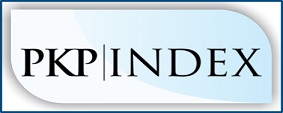Meningkatkan Self-Efficacy Matematika Siswa Melalui Pembelajaran Berbasis Masalah
Abstract
Pembelajaran matematika dipengaruhi faktor afektif yang sangat penting bagi siswa, salah satu faktor tersebut adalah self-efficacy. Siswa dituntut untuk memiliki self-efficacy matematika yang tinggi. Dengan ini diharapkan mampu mendukung keberhasilan pembelajaran matematika. Adanya fakta-fakta yang menunjukkan rendahnya self-efficacy dalam pembelajaran matematika, sehingga mendorong peneliti untuk meningkatkan self-efficacy dengan melakukan peningkatan proses dalam pembelajaran matematika. Upaya konkrit yang bisa diterapkan adalah dengan mengimplementasikan pendekatan Pembelajaran Berbasis Masalah (PBM). Penelitian yang dilakukan tergolong Penelitian Tindakan Kelas (PTK) dengan menerapkan pendekatan Pembelajaran Berbasis Masalah (PBM) untuk meningkatkan tingkat self-efficacy matematika yang dimiliki siswa. Dalam pelaksanaannya, Penelitian Tindakan Kelas (PTK) dilakukan dalam dua siklus. Pada setiap siklusnya terdiri dari perencanaan, tindakan, pengamatan, dan refleksi. Dalam penelitian ini, ditemukan bahwa pendekatan Pembelajaran Berbasis Masalah (PBM) dapat meningkatkan self-efficacy matematika siswa. Pada akhir siklus pertama, self-efficacy matematika siswa ternyata masih dalam kategori menengah (sedang) dan pada akhir siklus kedua menunjukkan peningkatan self-efficacy matematika siswa pada kategori tinggi.
Downloads
References
Arends, R. I., & Kilcher, A. (2010). Teaching for Student Learning Becoming an Accomplished Teacher (first). Routledge 270 Madison Avenue.
Arfany, F. P., & Faradiba, S. S. (2022). Karakterisasi Kesalahan Konsep Matematis Siswa dalam Menyelesaikan Soal Relasi dan Fungsi. Jurnal Cendekia: Jurnal Pendidikan Matematika, 6(3), 3044–3058. https://doi.org/10.31004/cendekia.v6i3.1780
Bilgin, I., Şenocak, E., & Sözbilir, M. (2009). The Effects of Problem-Based Learning Instruction on University Students’ Performance of Conceptual and Quantitative Problems in Gas Concepts. Eurasia Journal of Mathematics, 5(2), 153–164.
El-Rumi, U. (2022). The development of students’ self-regulated learning through online learning design. Jurnal Kependidikan Penelitian Inovasi Pembelajaran, 6(1), 53–67. https://doi.org/10.21831/jk.v6i1.44980
Ernawati, Zulmaulida, R., Saputra, E., Munir, M., Zanthy, L. S., Rusdin, Wahnyuni,
M., Irham, M., Akmal, N., & Nasruddin. (2021). Problematika Pembelajaran Matematika (M. Supratman, Ed.; Pertama). Yayasan Penerbit Muhammad Zaini.
Faradiba, S. S., Sa’dijah, C., Parta, I. N., & Rahardjo, S. (2019). Looking without seeing: The role of metacognitive blindness of student with high math anxiety. International Journal of Cognitive Research in Science, Engineering and Education, 7(2), 53–65. https://doi.org/10.5937/IJCRSEE1902053F
Fast, L. A., Lewis, J., Bryant, M. J., Bocian, K. A., Cardullo, R. A., Rettig, M., &
Hammond, K. A. (2015). Math Self-efficacy 1 Does Math Self-efficacy Mediate the Effect of the Perceived Classroom Environment on Standardized Math Test Performance?
Fast, L. A., Lewis, J. L., Bryant, M. J., Bocian, K. A., Cardullo, R. A., Rettig, M., &
Hammond, K. A. (2010). Does Math Self-Efficacy Mediate the Effect of the Perceived Classroom Environment on Standardized Math Test Performance? Journal of Educational Psychology, 102(3), 729–740. https://doi.org/10.1037/a0018863
Fatade, A. O., Mogari, D., & Arigbabu, A. A. (2013). Effect Of Problem-Based Learning On Senior Secondary School Students’ Achievements In Further Mathematics (Vol. 6, Issue 3).
Gabriel, M. H., Atkins, D., Chokshi, A., Midence, S., & Bowdon, M. (2019). Exploring Math Anxiety and Math Self-Efficacy among Health Administration Students.
Herman, T. (2007). Pembelajaran Matematika Berbasis Masalah Untuk Meningkatkan Kemampuan Berpikir Matematik Tingkat Tinggi Siswa SLTP.
Jonassen, D. H. (2011). Learning to Solve Problem: A Handbook for Designing Problem Solving Learning Environments. Routledge 270 Madison Avenue.
Kemmis, S., McTaggart, R., & Nixon, R. (2014). The Action Research Planner Doing Critical Participatory Action Research. Springer Science+Business Media Singapore.
Latipah, E., Kalijaga, S., Jalan Marsda, A., & Sucipto, Y. (2017). Pengaruh Strategi Experiential Learning Terhadap Self Regulated Learning Mahasiswa. Humanitas, 14(1), 41–56.
Lunenburg, F. C. (2011). Self-Efficacy in the Workplace: Implications for Motivation and Performance. In International Journal of Management (Vol. 14).
Mahendrawan, E., Solihat, I., Yanuarti, M., Studi Teknik Mesin, P., Teknik, F., Pamulang, U., Studi Manajeman, P., Ekonomi dan Bisnis, F., Pamulang JlSurya
Kencana No, U., Barat, P., & Selatan, T. (2022). Efektivitas Penggunaan LKS Problem Based Learning (PBL) Materi Aritmatika Ditinjau dari Kemampuan Berpikir Kreatif Matematika.
Mubarika, M. P., Faiqoh, E., Susilawati, S., Raharjo, T. D., & Yaniawati, P. (2022). K
R E A N O The Influence of Mathematical Creative Thinking Ability on Students’ Self-Regulated Learning Through a Scientific Approach. http://journal.unnes.ac.id/nju/index.php/kreano
Mukhid, A. (2019). SELF-EFFICACY (Perspektif Teori Kognitif Sosial dan Implikasinya terhadap Pendidikan). www.emory.edu/
Norman, G. R., & Schmidt, H. G. (2000). Effectiveness of problem-based learning curricula: theory, practice and paper darts.
Perez, E. D., & Ye, Y. (2013). The Relationship Between Mathematics Self-Efficacy And Mathematics Achievement Of Mathayomsuksa Students In The English Program Of St. Joseph Bangna School.
Recker, A., Leary, M., & Robertshaw, H. B. (2010). Integrating Technology and Problem-Based Learning: A Integrating Technology and Problem-Based
Learning: A Comparison of Two Teacher Professional Development Comparison of Two Teacher Professional Development Approaches Approaches Integrating Technology and Problem-Based Learning: A Comparison of Two Teacher Professional Development Approaches. https://digitalcommons.usu.edu/iagroup
Redzuan, H. M., & Botty, H. (2015). Narrating a Teacher’s use of Structured Problem-Based Learning in a Mathematics Lesson Designing and implementing
PISA-like problems in the Mathematics Classrooms (Primary and/or Secondary Levels) View project Problem-Based Learning View project. In Article in Asian Journal of Social Sciences & Humanities. https://www.researchgate.net/publication/272183966
Riboroso, R. A., Llagas, R. M., Lou, J., & Taan, R. (2018). Mathematics Self Efficacy and Anxiety and Mathematics Performance of Elementary Education Students. International Journal of Scientific & Engineering Research, 9(11). http://www.ijser.org
Rohmatulloh, R., Novaliyosi, N., Nindiasari, H., & Fatah, A. (2022). Integrasi Media Pembelajaran pada Penerapan Problem Based Learning (PBL) dalam Pembelajaran Matematika. Edukatif: Jurnal Ilmu Pendidikan, 4(4), 5544–5557. https://doi.org/10.31004/edukatif.v4i4.3249
Spaniol, S. R. (2017). ScholarWorks Students’ Mathematics Self-Efficacy, Anxiety, and Course Level at a Community College. https://scholarworks.waldenu.edu/dissertations
Susanti, E., & Faradiba, S. S. (2022). Analisis Kemampuan Koneksi Matematika Peserta Didik dalam Memecahkan Masalah Matematika Berdasarkan Metacognitive Awereness Inventory. 06(02), 1203–1219.
Tan, O.-S. (2003). Problem-Based Learning Innovation: Using Problems to Power Learning in The 21st Century. Cengage Learning.
Widdah, H., & Faradiba, S. S. (2022). Analisis Literasi Matematika Pada Pembelajaran Matriks Menggunakan Mind Mapping. 06(02), 1670–1681.
Zimmerman, B. J. (2000). Self-Efficacy: An Essential Motive to Learn. Contemporary Educational Psychology, 25(1), 82–91. https://doi.org/10.1006/ceps.1999.1016
Zimmermann, M., & Bescherer, C. (2011). A questionnaire for surveying mathematics self-efficacy expectations of Prospective teachers. https://www.researchgate.net/publication/236178760
Copyright (c) 2023 Fandy Puspita Negara, Zainal Abidin, Surya Sari Faradiba

This work is licensed under a Creative Commons Attribution-ShareAlike 4.0 International License.



1.jpg)














